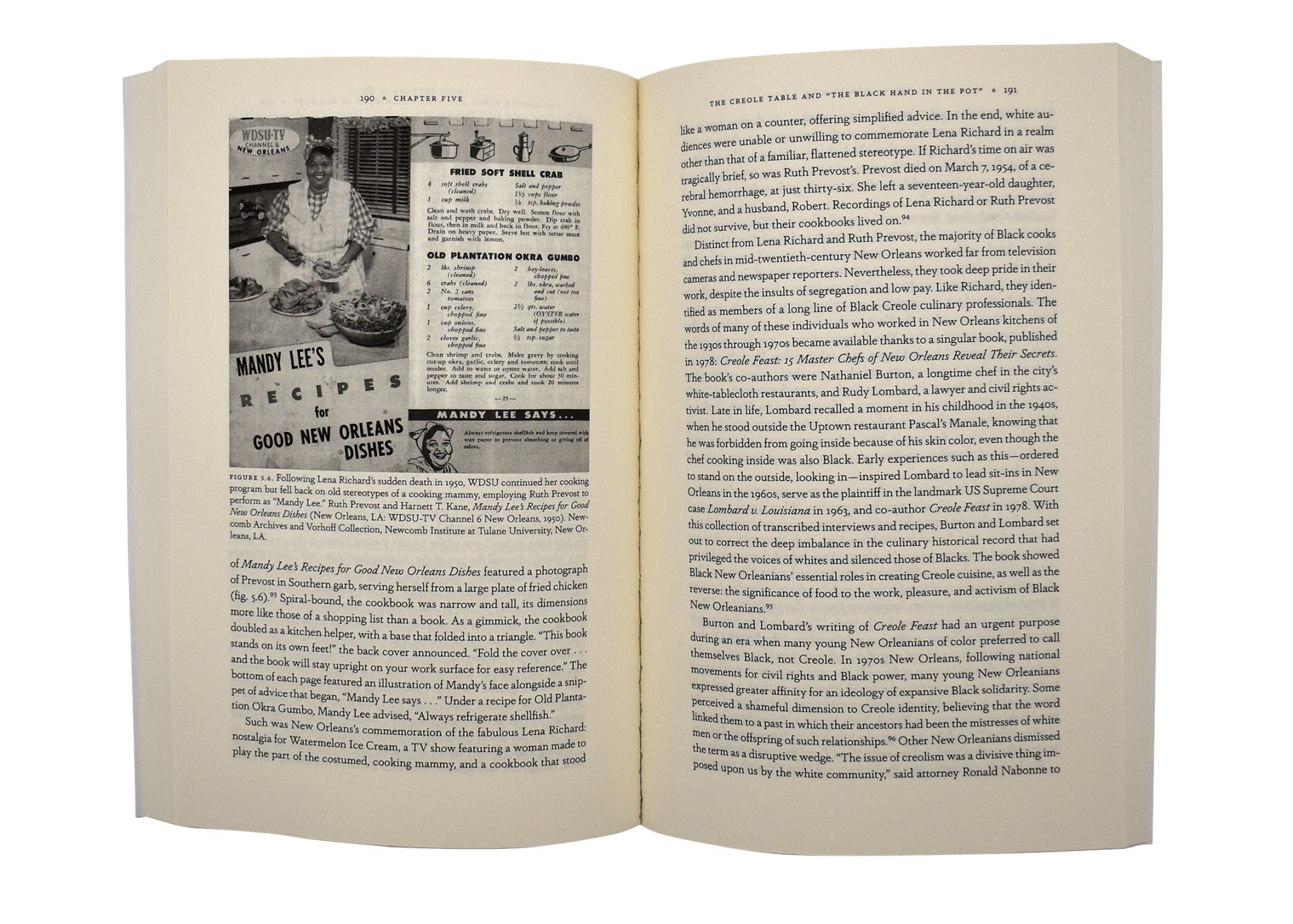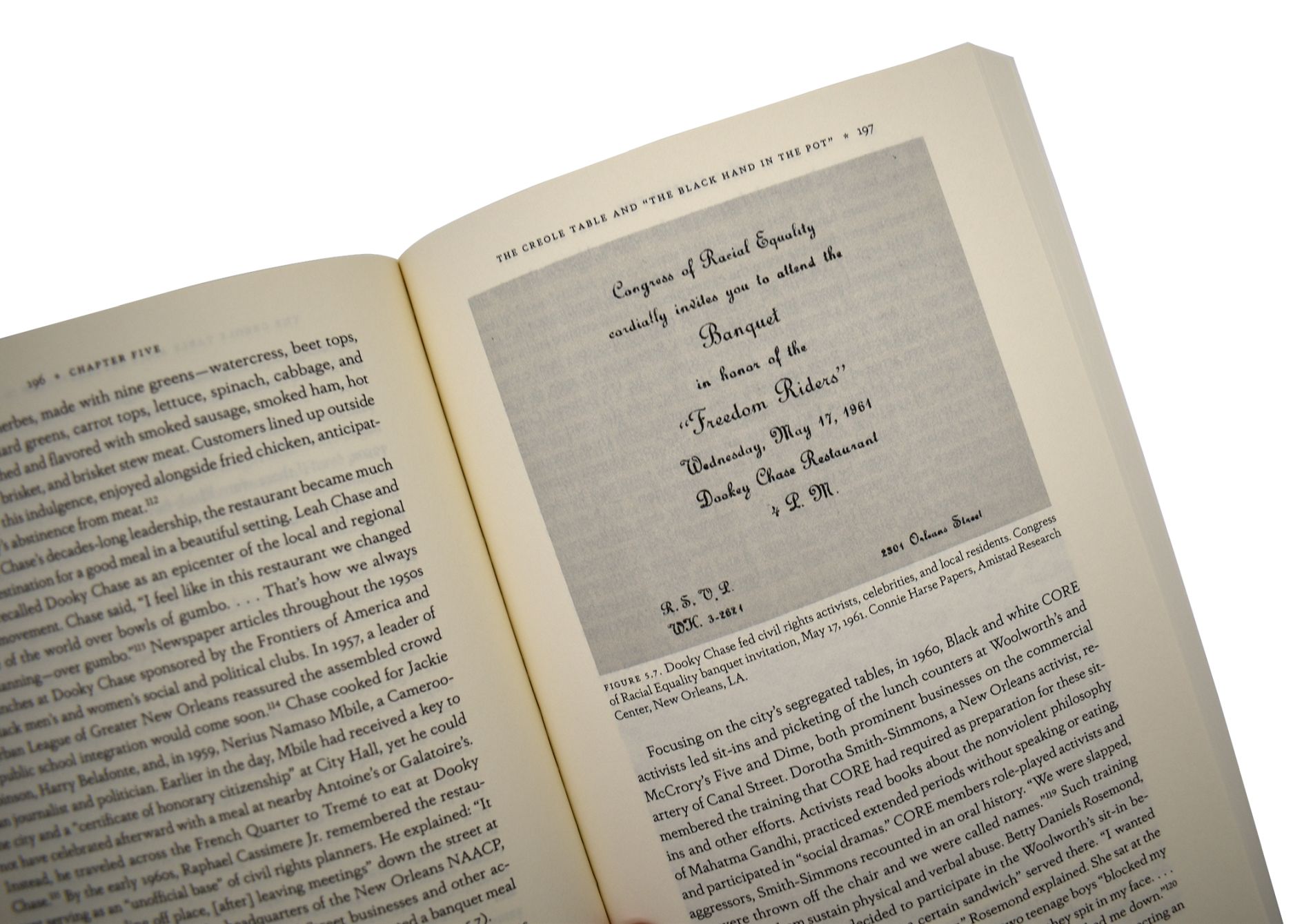Insatiable City
Food and Race in New Orleans
A 2025 James Beard Foundation Book Award Nominee in Reference, History, and Scholarship and a Smithsonian Best Book of 2024
A history of food in the Crescent City that explores race, power, social status, and labor.
In Insatiable City, Theresa McCulla probes the overt and covert ways that the production of food and the discourse about it both created and reinforced many strains of inequality in New Orleans, a city significantly defined by its foodways. Tracking the city’s economy from nineteenth-century chattel slavery to twentieth-century tourism, McCulla uses menus, cookbooks, newspapers, postcards, photography, and other material culture to limn the interplay among the production and reception of food, the inscription and reiteration of racial hierarchies, and the constant diminishment and exploitation of working-class people. The consumption of food and people, she shows, was mutually reinforced and deeply intertwined. Yet she also details how enslaved and free people of color in New Orleans used food and drink to carve paths of mobility, stability, autonomy, freedom, profit, and joy. A story of pain and pleasure, labor and leisure, Insatiable City goes far beyond the task of tracing New Orleans's culinary history to focus on how food suffuses culture and our understandings and constructions of race and power.
A history of food in the Crescent City that explores race, power, social status, and labor.
In Insatiable City, Theresa McCulla probes the overt and covert ways that the production of food and the discourse about it both created and reinforced many strains of inequality in New Orleans, a city significantly defined by its foodways. Tracking the city’s economy from nineteenth-century chattel slavery to twentieth-century tourism, McCulla uses menus, cookbooks, newspapers, postcards, photography, and other material culture to limn the interplay among the production and reception of food, the inscription and reiteration of racial hierarchies, and the constant diminishment and exploitation of working-class people. The consumption of food and people, she shows, was mutually reinforced and deeply intertwined. Yet she also details how enslaved and free people of color in New Orleans used food and drink to carve paths of mobility, stability, autonomy, freedom, profit, and joy. A story of pain and pleasure, labor and leisure, Insatiable City goes far beyond the task of tracing New Orleans's culinary history to focus on how food suffuses culture and our understandings and constructions of race and power.
Reviews
Table of Contents
Introduction
Chapter 1: Block and Table: Buying and Selling People and Food in Antebellum New Orleans
Chapter 2: Apples and Oranges, Food and Freedom: Food Workers in Antebellum New Orleans
Chapter 3: Field and Levee, through the Lens: Looking at Louisiana Sugar after the Civil War
Chapter 4: Mother Market: Bulbancha, Babel, New Deal
Chapter 5: The Creole Table and “the Black Hand in the Pot”
Epilogue
Acknowledgments
Notes
Selected Bibliography
Index
Chapter 1: Block and Table: Buying and Selling People and Food in Antebellum New Orleans
Chapter 2: Apples and Oranges, Food and Freedom: Food Workers in Antebellum New Orleans
Chapter 3: Field and Levee, through the Lens: Looking at Louisiana Sugar after the Civil War
Chapter 4: Mother Market: Bulbancha, Babel, New Deal
Chapter 5: The Creole Table and “the Black Hand in the Pot”
Epilogue
Acknowledgments
Notes
Selected Bibliography
Index



